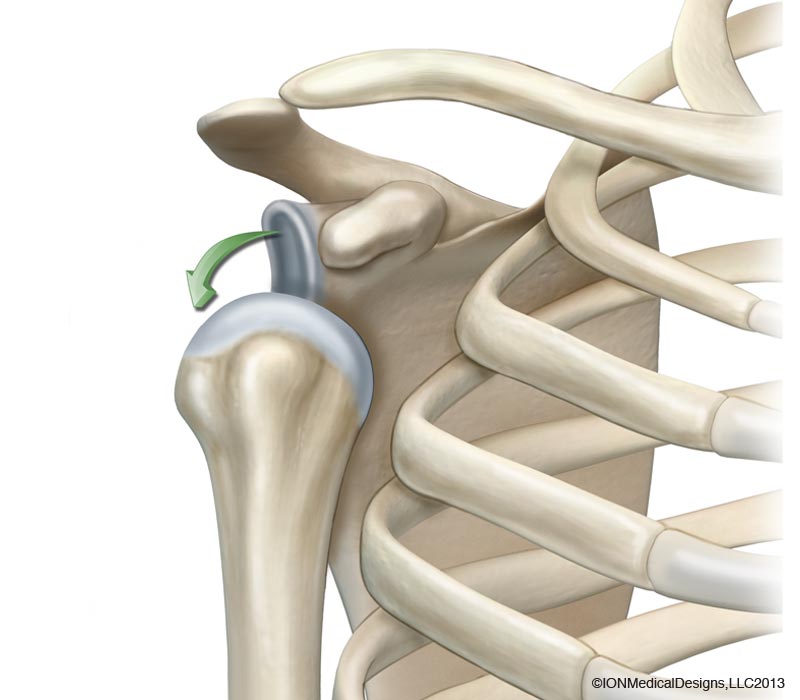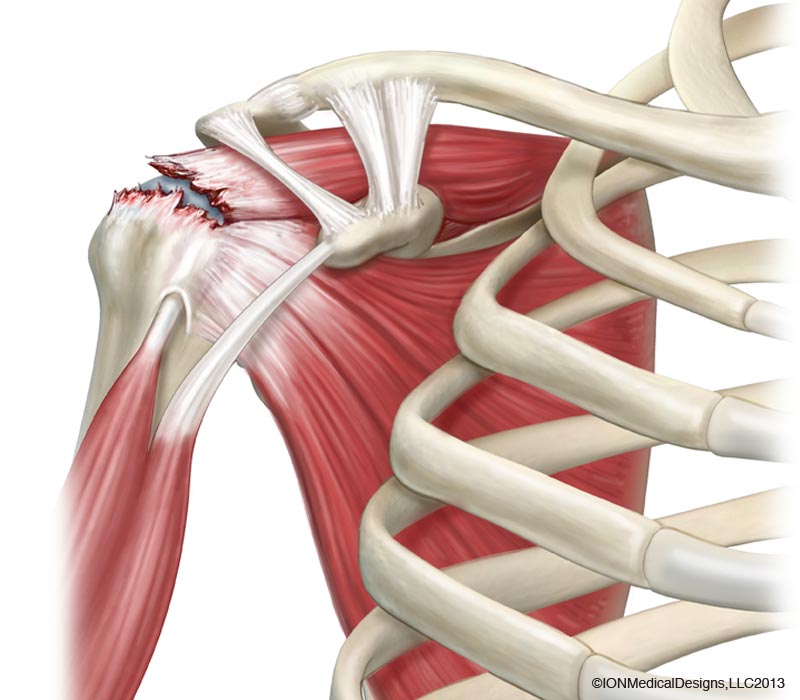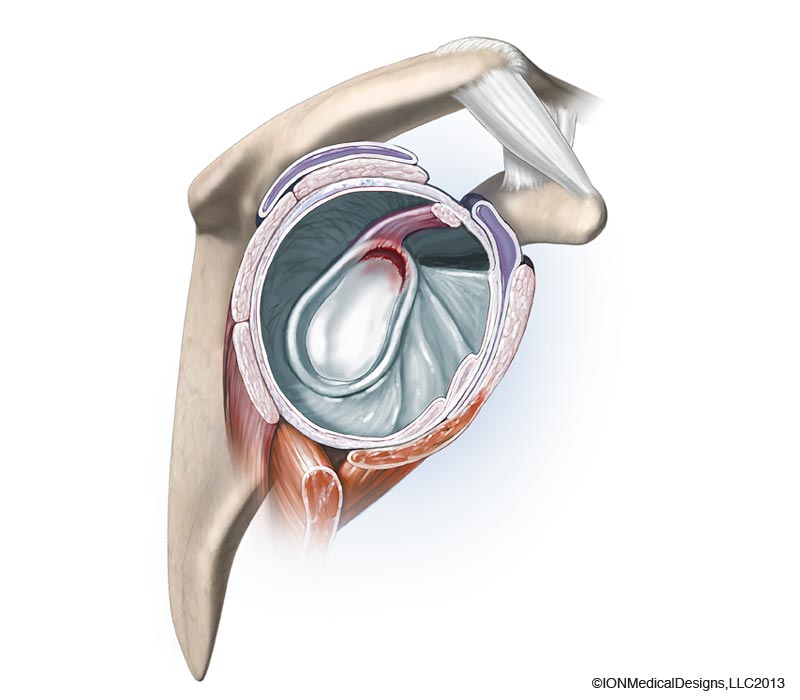Diagnosis / Treatment of the Shoulder
-
The shoulder is the most flexible in the body with the largest range of motion. Therefore, this joint is more prone to injury. For many of the injuries or shoulder problems, a procedure called shoulder arthroscopy can be used to treat the problem. Using small portals about the diameter of a pen, a small camera inserted into the joint allows for direct visualization of the bones, the ligaments, the rotator cuff and other structures. Through accessory portals, instruments can beRead more
-
 A shoulder dislocation occurs when the humeral head (ball part) of the shoulder is displaced from the glenoid (cup part of the shoulder). It usually slips forward (anterior) and down (inferior). It usually occurs by force, often when the arm is jerked backward. It can also be caused by landing on an outstretched arm or by striking the arm. Dislocations cause loss of motion, pain, and deformity of the shoulder. A so-called subluxation is a partial dislocation. The head slipsRead more
A shoulder dislocation occurs when the humeral head (ball part) of the shoulder is displaced from the glenoid (cup part of the shoulder). It usually slips forward (anterior) and down (inferior). It usually occurs by force, often when the arm is jerked backward. It can also be caused by landing on an outstretched arm or by striking the arm. Dislocations cause loss of motion, pain, and deformity of the shoulder. A so-called subluxation is a partial dislocation. The head slipsRead more
-
Frozen shoulder, also called adhesive capsulitis, is often idiopathic in origin. This means we are not sure why it happens. It is most often seen in women (though occasionally in men) usually between the ages of 40 to 60. Patients with diabetes or thyroid disease are more prone to have the problem. It is caused by a contraction (tightening) of ligaments and capsular tissues around the ball part of the shoulder which limits its rotation causing a loss of motion.Read more
-
 Rotator cuff tears are exceptionally common and pose one of the most debilitating problems of the shoulder. There are four tendons that make up the rotator cuff. (See the shoulder anatomy). Tears can range from a small partial thickness tear of one tendon, to a full thickness tear of one or more tendons to massive tears with extensive retraction back into the shoulder. The disability is proportional to the size of the tear and whether it is acute or chronic.Read more
Rotator cuff tears are exceptionally common and pose one of the most debilitating problems of the shoulder. There are four tendons that make up the rotator cuff. (See the shoulder anatomy). Tears can range from a small partial thickness tear of one tendon, to a full thickness tear of one or more tendons to massive tears with extensive retraction back into the shoulder. The disability is proportional to the size of the tear and whether it is acute or chronic.Read more
-
Shoulder impingement syndrome is a common shoulder complaint. The condition often is called bursitis or tendinitis. It is caused by an inflammation of the bursa under the tip of the shoulder, inflammation of the rotator cuff and/or an inflammation of the biceps tendon. Many patients also have some arthritis of the acromio-clavicular joint which contributes to the problem. Patients who habitually work over their head are more prone to this problem; however there are many various causes. Usually there isRead more
-
Shoulder Instability is often caused by one of two main causes. An injury to the bones and/or stabilizers as a result of a shoulder dislocation can lead to chronic instability. Or, a fall on an outstretched arm or a blow to the shoulder can cause similar problems. The second type of injury is really more of a laxity. It can be a natural laxity or an acquired laxity where the structures become loose over time. This instability is not necessarilyRead more
-
 A SLAP injury to the shoulder usually is caused by one of two main causes. A fall on an outstretched arm can lever the shoulder upward and tear certain tissues. A second cause is more of a chronic tearing. It is characteristically found in over head throwing athletes such as pitchers or quarterbacks, also with tennis players, racquetball players and volleyball players. The cocking motion slowly can torque the shoulder creating a particular tear pattern. These athletes complain of painRead more
A SLAP injury to the shoulder usually is caused by one of two main causes. A fall on an outstretched arm can lever the shoulder upward and tear certain tissues. A second cause is more of a chronic tearing. It is characteristically found in over head throwing athletes such as pitchers or quarterbacks, also with tennis players, racquetball players and volleyball players. The cocking motion slowly can torque the shoulder creating a particular tear pattern. These athletes complain of painRead more


